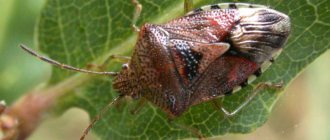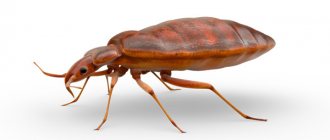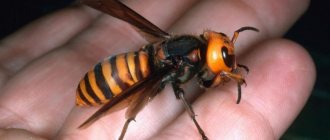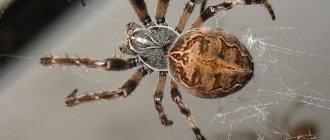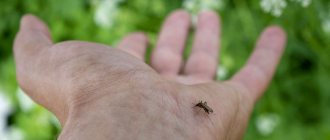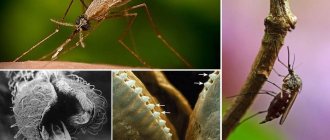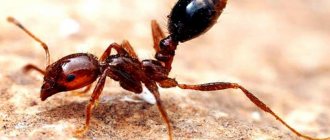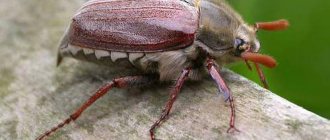The story of how bedbugs move is rarely complete without legends and outright fantasies. Meeting them makes a person want to move to a safe distance. Insects of the suborder Hemiptera (Hemiptera) do not pose any threat. They can swim, fly, jump and run. Domestic bed bloodsuckers only crawl, their movement speed is low.
House bugs move only with the help of their legs.
General information about bedbugs
Some types of parasites differ from each other in the following ways:
- lifestyle;
- nutritional characteristics;
- appearance.
Representatives of hemiptera have the same structure of the oral cavity. Some species feed on plant sap or human blood.
Parasites have a distinctive feature - they emit an unpleasant odor, which is formed as a result of the functioning of special glands located on the belly of the bug between the first and second pair of limbs. The aroma of the secreted liquid repels other insects.
The garden is inhabited by soldier bugs that destroy pests. Representatives of the Podisus species feed on Colorado potato beetles, and the turtle bug damages seedlings and young trees. Many species of the suborder Hemiptera consume the blood of animals, birds, bats, and humans. The clothing bug belongs to them.
Features of domestic bloodsuckers
An insect that lives in bed or linen cannot exist in an environment other than human habitation. Bed bugs have a size of no more than 8 mm, a flattened abdomen, which slightly expands on the sides.
Domestic bugs have defective wings; their capabilities are not enough to fly.
During its development, the bloodsucker goes through a stage of incomplete transformation. Nymphs hatch from eggs; the larvae are much smaller than the mother and do not have wings.
Linen parasites crawl along walls and ceilings in search of food, using a small proboscis to pierce human skin. Representatives of the order Hemiptera feed at night, being particularly active at 4-5 am.
Insects have a good sense of smell and identify food sources by smell.
The bug quickly finds small capillary vessels, pierces the skin, injecting an anesthetic composition.
Having drunk blood, it moves along the surface of the body 2-3 cm and bites the person again, continuing the process of saturation.
Main reasons for migration
The movement of blood-sucking insects is a forced or natural process.
Parasites enter an apartment in the following ways:
- on the clothes and shoes of family members;
- when purchasing contaminated furniture or items;
- on pet fur.
Migration of bedbugs occurs during renovation of premises or during the period of disinfestation measures. Relocation of bedding species is carried out in the dark. Only during disinfestation do insects migrate during the day. The movement of blood-sucking individuals can also occur along the external walls of multi-story buildings.
The main reason for the movement of bedbugs is hunger, which threatens their existence. The migration of laundry parasites from neighbors is a common process in a multi-story building.
Animals
Pets like cats and dogs rarely get bedbugs, but it does happen. The scenario in this case is the same as with things - if the animal is in a heavily infested room, bedbugs can crawl into the animal’s fur. Since bedbugs rarely bite animals, this source of infection is unlikely.
How do insects move?
Domestic bloodsuckers do not run very fast; they are only able to crawl from their shelter to the location of the victim, moving slowly with the help of 3 pairs of limbs.
In the early morning or during the daytime, it is difficult to notice insects, because they make only short dashes. Linen bugs are unable to jump and fly due to the lack of wings. The inability to move quickly affects their lifestyle: for most of the day they hide in crevices, which they leave when they are hungry.
During daylight hours, bedbugs in the apartment hide in cracks.
Moving slowly, bedbugs crawl to the sofa or bed and attack a sleeping person.
From one apartment to another
Insects can penetrate from an infected home into a clean apartment, hiding in the folds of outer clothing. Sometimes guests whose home is infested with parasites bring the pests into the house of their friends or acquaintances.
Bloodsuckers can be introduced by purchasing old furniture or used items from owners whose home is a habitat for pests.
Bedbugs can enter an apartment by settling on the back panel of the sofa, hiding in small holes or cracks.
In favorable home conditions, an adult female leaves up to 6 clutches daily. Young parasites are capable of mating a month after hatching from the eggs.
Around the house
Having penetrated into a living space, bedbugs can quickly spread throughout the apartment if a person discovers their shelter and violates its integrity. In the first days, no one notices the blood-sucking individuals; they rarely crawl within sight. After 1-2 weeks there are more of them, they migrate between rooms in search of food. Insects do not form nests; if their peace is disturbed, they crawl around the apartment in search of a new shelter.
Infection of a home through things
Are bed bugs carried on clothes?
In order for the parasite to attach itself to a new guest, you need to at least visit a dysfunctional home in the evening or at night. It is at this time that the bloodsuckers crawl out of their hiding places. They like to live in crevices, so that both their back and stomach are in contact with objects.
This makes them feel safe. Most often, there is a risk of bringing bedbugs home on clothes during business trips and travel, when you have to spend more than one night overnight.
In order to prevent this nuisance, you need to store your clothes in tightly closed cases or suitcases during overnight stays in hotels.
If during your stay in a new place there were at least some signs of the presence of parasites, then at home you need to:
- carefully inspect all seams of clothing;
- wash clothes at 90 degrees, if possible;
- clean clothes from bedbugs using special products.
It is better to immediately monitor the sanitary conditions of a temporary shelter for an overnight stay. You should not leave bags and wardrobe items on your sleeping area.
It is easy to transfer bedbugs on clothes from a dysfunctional home, but getting rid of them at home will require a lot of patience and possibly expense.
Pest running speed
Bedbugs move at a speed of 1 m per minute. Small larvae move more slowly, so they live near human sleeping places so as not to move long distances at night.
House bugs move exclusively in one way - crawling from place to place.
During the migration period, domestic parasites travel long distances. In 24 hours, moving through a ventilation shaft, bedbugs crawl several hundred meters.
Domestic bloodsuckers move slower than cockroaches. Predatory bugs of the Antacoris species, living in tropical countries, move faster than linen bugs and attack sedentary insects - mollusks, caterpillars, larvae.
How bedbugs are transmitted by people themselves
A person can bring domestic parasites into an apartment on outer clothing. Having entered the room, insects take up residence in wardrobes. Favorable conditions for the reproduction of bedbugs in the folds of clothing are a temperature of +25°C and high humidity. If the owner purchased old furniture, he may infest the house with blood-sucking insects and discover them several months later.
Soft toys and old books brought into the apartment may be infested with bedbugs. Sometimes pests enter the home via packages that have been stored in unsanitary conditions in a contaminated warehouse.
While staying at a hotel or inn, a person does not notice that parasites have entered his luggage and brings them into his apartment.
Actions after processing
Each drug contains detailed instructions. It must be strictly followed, otherwise the result of exterminating bedbugs will not meet expectations, and the parasites will appear again.
Many drugs are not aimed at destroying egg clutches, but only affect larvae and adults. If you remove the remnants of the sprayed product from surfaces before the larvae hatch from the remaining clutches, the population of bedbugs will soon recover.
To avoid relapse, follow these recommendations:
- immediately after treatment, close the room tightly and leave it for several hours or days, depending on the instructions in the instructions for the drug used;
- After returning, the room or apartment must be thoroughly ventilated for several hours. The unpleasant odor should go away and the concentration of active substances in the air should decrease;
- You cannot do general cleaning immediately after bullying. The residual effect of the drugs allows you to kill those bugs that escaped death in the first hours after treatment;
- For the safety of people and pets, the most contact surfaces (tables, furniture and door handles, chair backs, etc.) should be washed with soapy water.
Thorough cleaning of the room is carried out no earlier than 2-3 weeks after treatment. During it:
- all hard-to-reach places are thoroughly washed, you can do this with a solution of acetic acid;
- corpses of insects and larvae are removed;
- a thorough inspection of the apartment and furniture is carried out for the presence of egg laying;
- a decision is made on the need for re-processing.
It is better not to treat some things, especially large furniture that are heavily infested with bedbugs, but to remove them from the apartment and burn them. It is extremely difficult to remove bedbug populations from old sofas, beds or armchairs. They hide in the interior upholstery, cracks of wooden elements and will constantly restore their numbers.
If it is not possible to burn the furniture, then it is enough to destroy visible colonies of parasites, take the infected item to a landfill or bury it deep in the ground. After transporting such “biological bombs”, vehicles also need to be processed.
The possibility of insects appearing in the house due to exterminators
Chemical treatment of the premises forces parasites to leave their habitat. Individuals that did not die during disinfestation crawl into neighboring apartments located in multi-story buildings. Bed bugs do not leave their habitat if disinfestation was carried out unprofessionally, or during work they used drugs to which the pests have become resistant.
The survivors after disinfestation begin to seek shelter in other apartments.
Blood-sucking insects can re-enter the room after chemical treatment if there were too many of them and the poison did not reach the hiding places of the individuals.
Chemicals?
What is the best bedbug chemical for clothing?
It is worth paying attention to high-quality insecticides, such as:
- Gektor (Hector)
- Agran remedy for bedbugs
- Cifox
- Foresight PRO
- Get Total
These products have an average toxic effect on humans. But you should not be negligent about this method of exterminating parasites. Health risks remain. You must follow the instructions carefully. When treating clothes against bedbugs, wear a mask and gloves.
After the procedure, clothes should be placed in a bag and not used for a week. After this period, things should be washed in a soda solution and rinsed in cold water several times.
Common Myths
Many people feel fear at the mere mention of blood-sucking parasites and willingly believe various stories about bed bugs.
The following are popular among them:
- Household parasites carry dangerous diseases. This statement is not true. A person who is constantly bitten by bedbugs develops symptoms: itching at the site of the skin puncture, insomnia, allergic reactions on the skin. Parasite bites negatively affect the state of the nervous system, symptoms of depression often develop, a person feels anxiety, and panic seizes him. Scientists have found that domestic bloodsuckers are not carriers of dangerous diseases.
- The small size of insects makes them difficult to detect with the naked eye. This is an incorrect statement, because a person with normal vision can see the parasite. The body of the bug is slightly flattened, but after eating it increases in size, then the insect is easy to notice in the bed or behind the carpet.
- Linen specimens live only in beds. An erroneous statement, because Parasites are found not only in the folds of bedding, they live in curtains, the seams of chairs and under the upholstery of the sofa.
Bed bugs fly and jump
Bed parasites only move slowly over short distances, but are unable to fly or jump. A hungry insect covers a distance of 30 cm in 60 seconds. Having eaten, the bug becomes less mobile, because his body increases in size several times.
The size of a well-fed bug increases significantly, it becomes more noticeable and inactive.
The pest crawls a short distance 2.5 times slower.
There is a myth among owners of comfortable apartments and country houses that a blood-sucking insect can jump and fly. The reason for the misconceptions is related to the behavior of other representatives belonging to the order Hemiptera. Among them there are individuals that make jumps and can fly in air currents over long distances.
The house bug has a special body structure. 6 small limbs do not allow the insect to make even short jumps. The wings, which fit tightly to the upper part of the body, are in their infancy. They can only be seen upon closer inspection.
When studying information about bedbugs, it becomes clear that blood-sucking parasites can move around the apartment only by crawling from one place to another.
Citizens living nearby
There are a lot of apartments in the high-rise building, and there are also a lot of people. There is a high probability that after pestering the premises by your neighbors, the bedbugs will move to your place. Insecticides irritate their receptors, insects take an easily justifiable flight.
It is important to maintain friendly relations with your neighbors. Greeting with a sincere smile when meeting is an integral attribute of mutual predisposition
And from here follow periodic discussions of the children’s progress at school, shared gatherings in the kitchen with tea and cigarettes, and conversations about bedbugs.
A normal attitude acts as a catalyst that opens access to relevant information. The more good-natured the communication, the more complete the verbally described pictures. Ask on occasion if your neighbors have been killing bedbugs for an hour, and everything will immediately become clear.
Interesting Facts
Residents of apartment buildings should know some signs of the presence of linen bloodsuckers indoors:
- The bug has an odor reminiscent of coriander.
- An indisputable sign of the presence of insects is complaints from family members about the appearance of numerous bites located on the body.
- Peak food intake for parasites is from 0:00 to 05:00 hours.
- An insect that feeds on blood can go without food for 2 months.
- An adult quickly finds a food source, because senses the warmth of the human body and the presence of carbon dioxide in the exhaled air.
- A bug bite causes an allergic reaction in 80% of people.
- The insect is often the cause of anemia in young children.
- Triatomidae are carriers of the causative agent of Chagas disease or American trypanosomiasis.
- An increase in the number of blood-sucking parasites is facilitated by the formation of populations resistant to the effects of insecticides, for example, 25% of cypermethrin, which is part of disinfectants.
There are many ways to combat home bugs, which allow you to destroy all blood-sucking insects living in the room.
Traditional methods
Folk remedies are effective for small numbers of ecoparasites or as preventive measures. They give a temporary effect, repelling bedbugs, but not destroying them. These methods are useful if there are small children living in the house, people with allergies, i.e. the use of potent drugs is undesirable. People's experience offers:
- Use strong-smelling herbs: chamomile, wormwood, valerian, tansy, wild rosemary, elderberry. You can pour powder or spread out twigs.
- Apply strong-smelling perfume or cologne to your body.
- Compositions with a pungent odor - vinegar, ammonia, acetone, denatured alcohol. Their solutions are used to wipe surfaces or place containers filled with them.
- Turpentine. For example, a 1:1 mixture with ethyl alcohol with the addition of 1/20 camphor. Treat, leave for a day, ventilate, wash thoroughly.
- Freeze the room - at temperatures below -200C, bedbugs die;
- Treat the room with steam or boiling water.
Strong-smelling compounds and herbs will only repel pests temporarily. Treatment with steam or turpentine is more effective, but it will have to be repeated. When there are a large number of bedbugs, special chemical compounds are used.
